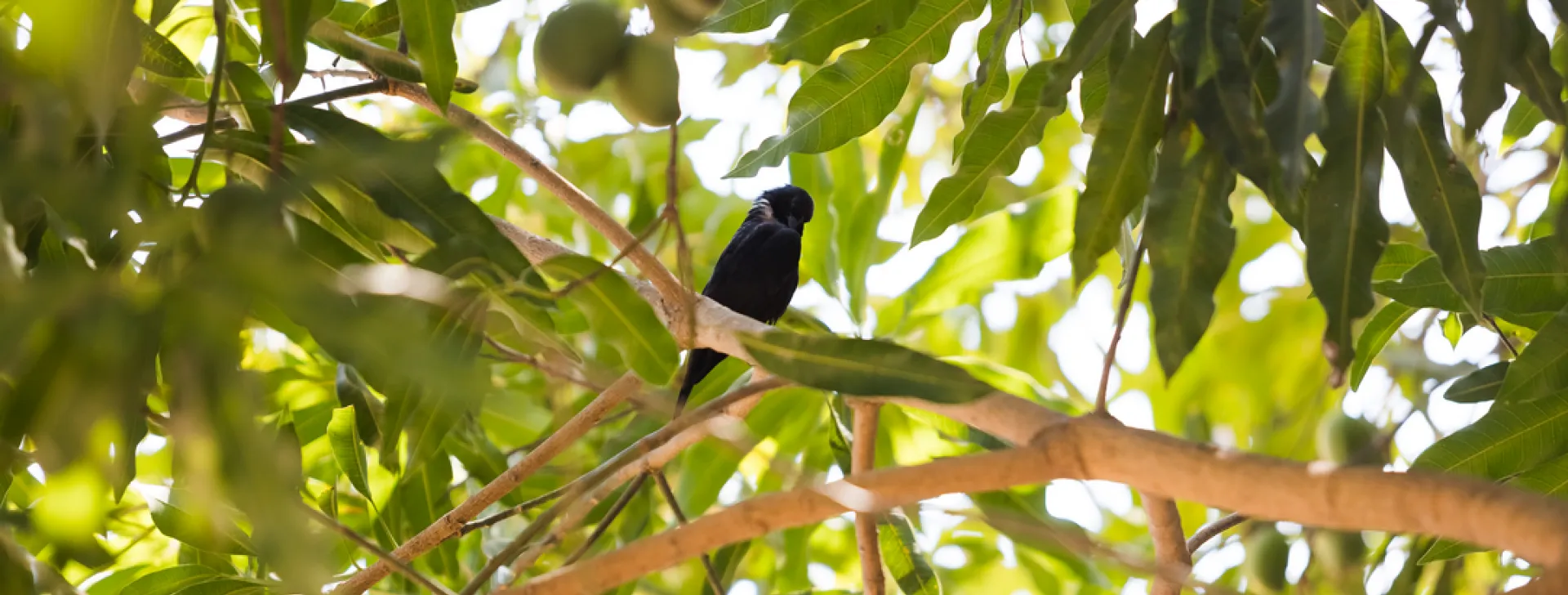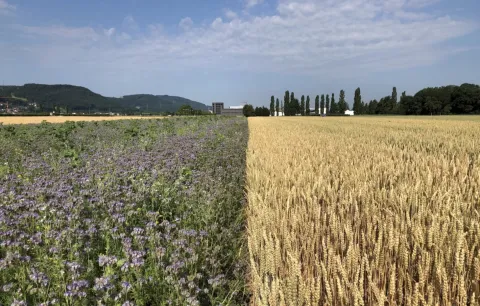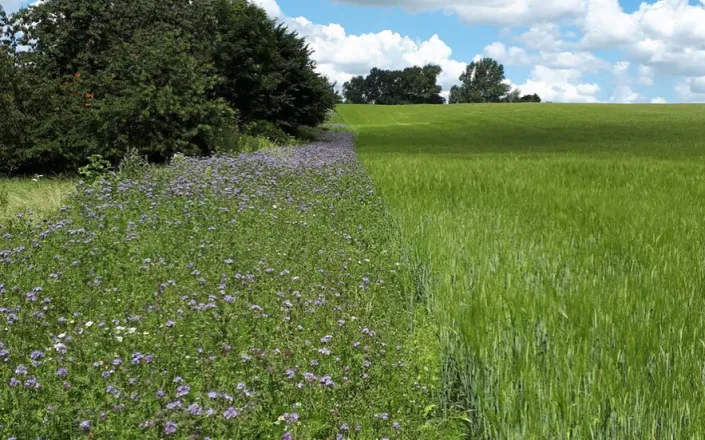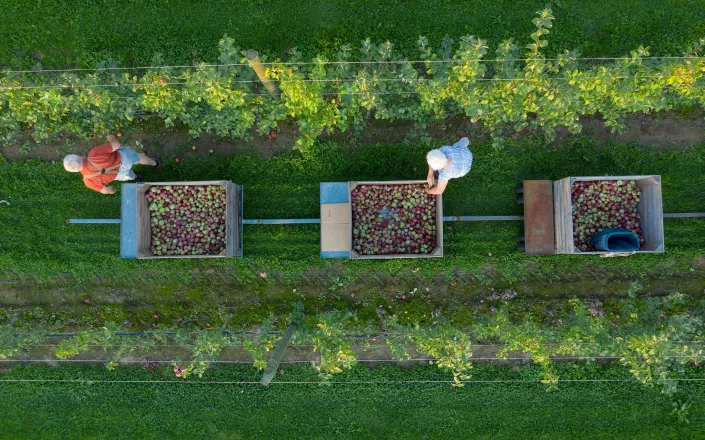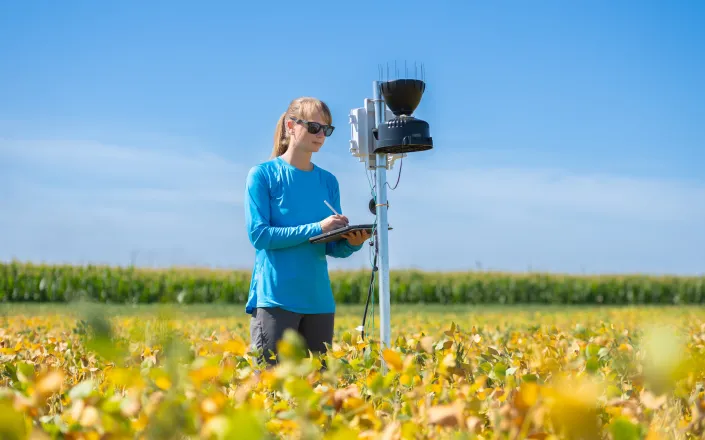Biodiversity is the backbone of sustainable agriculture. By fostering diverse ecosystems, farmers can support resilient crops, healthy soils, and thriving pollinators, ensuring food security and environmental balance. We can conserve biodiversity through innovative solutions that harmonize farming with nature. This empowers farmers to cultivate a future where agriculture and ecosystems flourish together.
What is biodiversity?
Biodiversity - or biological diversity - describes the incredible variety of life on Earth. It exists at multiple connected levels: genetic diversity within species, the multitude of different species themselves, and the diverse ecosystems they inhabit.
This complex web includes everything from microscopic soil organisms to vast forest systems. Each level plays a vital role: genetic diversity enables species adaptation, different species perform essential ecosystem functions, and varied habitats support distinct communities of life.
In agriculture, biodiversity is particularly crucial. It includes not just crops and livestock, but also wild relatives of food species, pollinators, soil organisms, and natural pest controllers. These elements work together in an intricate network that sustains food production and ecosystem health.
Through these interconnected relationships - like pollinators visiting flowers or beneficial fungi supporting plant roots - biodiversity maintains the natural balance that all life depends upon.
Why is biodiversity important for human life?
Biodiversity is the basis for all life on earth and agriculture depends on biodiversity in many ways.
Productive farming relies on pollination, beneficial insects that suppress pest pressure, healthy soil structures, and a broad range and high genetic diversity of crop plants.
Therefore, it is essential that we protect biodiversity while increasing agricultural production to meet the world’s growing food, feed, and fuel demands.
What is the impact of biodiversity decline?
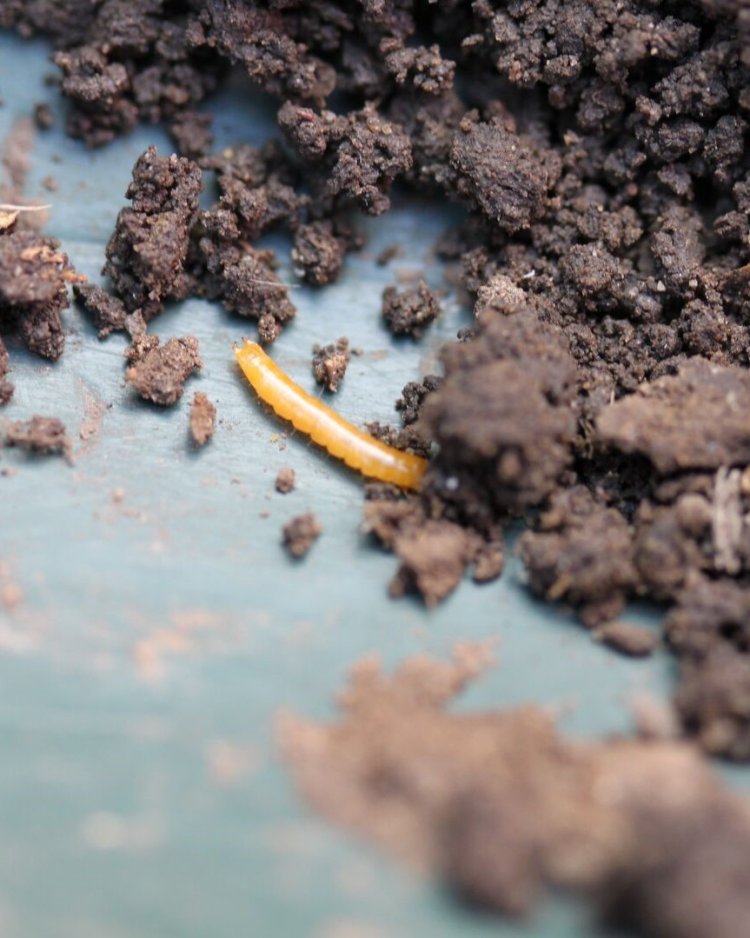
When biodiversity declines on farms, creating what we call monocultures where only single crops dominate vast landscapes, nature's delicate balance begins to unravel, triggering a cascade of interconnected problems that threaten the foundation of sustainable agriculture.
Biodiversity checks harmful species
Picture a farm where genetic uniformity has replaced nature's variety. Without the natural diversity that once provided checks and balances, pests and diseases find ideal conditions to spread rapidly through genetically similar crops. The absence of beneficial insects, birds, and other natural predators allows harmful species to multiply unchecked, forcing farmers to rely increasingly on conventional interventions.
Soil in decline
Continuous cultivation of the same crop strips away specific nutrients, while the lack of diverse root systems - once nature's architects of soil structure - leads to degradation, erosion and low water infiltration . The complex web of soil organisms that once cycled nutrients efficiently disappears, replaced by dependence on synthetic fertilizers. Poor water management is a growing challenge for crops. This is mainly due to soil compaction and low water retention, problems that arise from conventional tillage practices and monoculture farming. These conditions make it difficult for crops to effectively use available water. Ecosystem services that biodiversity once provided - natural water filtration, carbon sequestration, and habitat provision - begin to disappear.
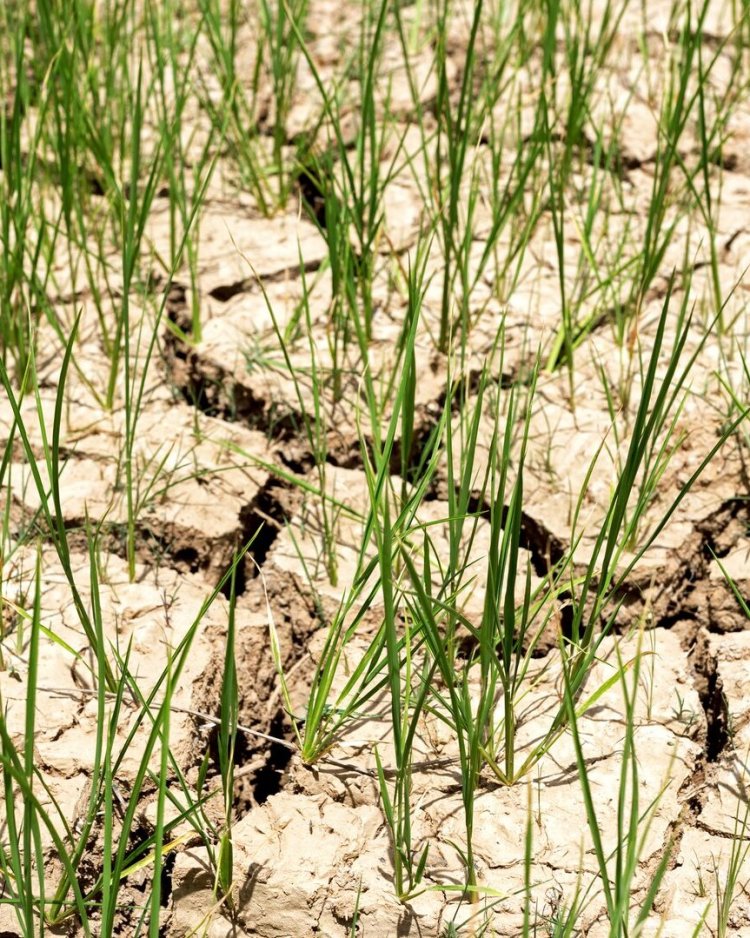
Pollination crisis
The quiet hum of pollinators grows fainter as their habitat shrinks. Reduced pollinator populations directly translate to diminished crop yields, and in some cases, complete crop failure. This pollination deficit represents not just an immediate production loss, but a breakdown in one of agriculture's most fundamental partnerships with nature.
Crops become vulnerable
Perhaps most concerning is the system's growing fragility. Crops become increasingly susceptible to climate fluctuations and extreme weather events. With reduced genetic diversity comes a diminished ability to adapt to changing conditions - whether drought, flood, new diseases, or shifting temperatures. This vulnerability extends beyond the field to farmers' economic security, as over-reliance on single crops creates dangerous exposure to market volatility and crop failure.
Breaking the cycle
Recognizing these interconnected challenges, forward-thinking farmers and agricultural systems are embracing biodiversity-enhancing practices. Through crop rotation, intercropping, agroforestry, and integrated pest management, they're rebuilding the natural resilience that makes farming systems not just more sustainable, but ultimately more productive and secure.
Biodiversity isn't just an environmental incentive but an insurance policy that protects our food systems against an uncertain future.
Addressing biodiversity challenges through agricultural innovation
While global biodiversity faces pressures from various factors including climate change, urban development, and land use changes, agriculture presents unique opportunities to be part of the solution. The agricultural sector recognizes its vital role in both food production and environmental stewardship, driving innovation toward practices that can enhance both productivity and biodiversity conservation.
According to the latest IPBES report on biodiversity and ecosystem services, over one million species require protection through coordinated conservation efforts. This challenge calls for transformative approaches that integrate biodiversity conservation with sustainable food production systems.
In agriculture, the primary opportunities for biodiversity enhancement lie in optimizing land use practices, developing climate-resilient farming systems, implementing regenerative crop management techniques, and advancing precision agriculture technologies. Modern crop protection represents a critical component of this integrated approach, enabling farmers to manage pests and weeds effectively while maximizing yields on existing farmland.
Strategic crop protection helps prevent agricultural expansion into natural habitats by ensuring optimal productivity on current agricultural land. This targeted approach supports biodiversity conservation by reducing pressure to convert forests, grasslands, and other critical ecosystems into farmland. When combined with habitat creation through flower margins, cover crops, and integrated pest management, crop protection becomes part of a comprehensive strategy that delivers both agricultural success and environmental benefits.
Through innovation in agricultural practices, technology, and stewardship, the farming sector can contribute meaningfully to global biodiversity conservation while continuing to meet the world's growing food security needs.
What is Syngenta doing to support biodiversity?
Syngenta is expanding its comprehensive approach to biodiversity protection through interconnected initiatives that span from laboratory innovation to field-level implementation. Our multifaceted strategy recognizes that preserving biodiversity requires action across the entire agricultural value chain.
Innovation for impact
At the heart of our efforts lies a commitment to developing solutions that work with nature rather than against it. We're intensifying research and development through a 'safe by design' approach, ensuring new products deliver greater effectiveness while minimizing environmental impact. This includes rigorously reviewing our current product portfolio to better understand both its environmental footprint and the value it provides to farmers worldwide.
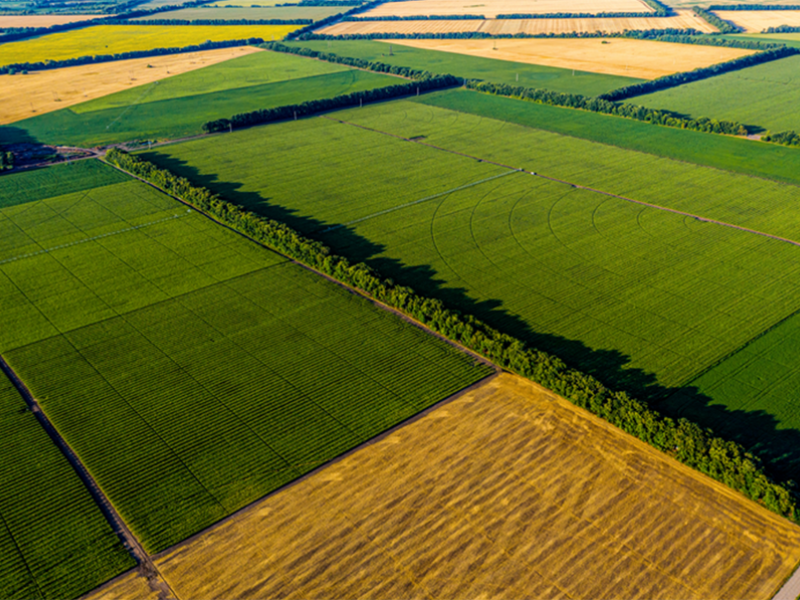
Supporting sustainable intensification
We're helping farmers achieve increased yields on existing arable land through integrated solutions combining advanced seeds, targeted plant protection, digital technologies, and comprehensive services. This approach directly reduces pressure to convert native forests and other critical habitats into agricultural land, preserving these biodiversity hotspots for future generations.
Central to this effort is our deepening understanding of soil health as both a foundation for productive agriculture and a crucial component of biodiversity. Healthy soils support diverse microbial communities while contributing to climate change mitigation through carbon sequestration.
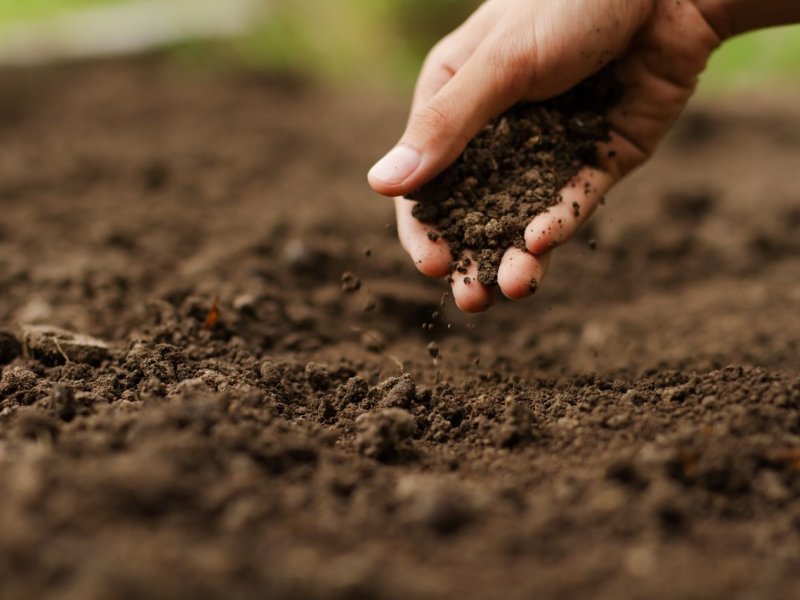
Responsible stewardship
Our stewardship initiatives ensure the safe and appropriate use of crop protection products according to label requirements. We're expanding these programs globally, recognizing that proper application is essential for both agricultural success and environmental protection. This commitment extends to our industrial operations, where we ensure new facilities avoid protected areas, comply with local regulations, prevent hazardous substance runoff, and incorporate wildlife-friendly areas wherever possible.
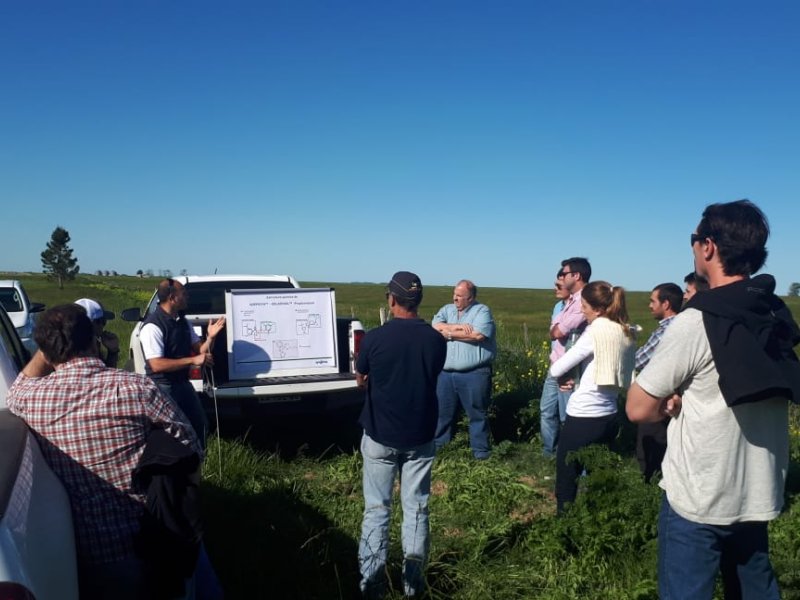
Empowering growers
Through comprehensive capability-building programs, we support growers in adopting agricultural practices that preserve biodiversity and habitats. Our training initiatives focus on Integrated Pest Management (IPM) and encompass establishing multifunctional field margins for pollinators and beneficial insects, maintaining soil health cover, creating aquatic ecosystem buffer zones, and optimizing product application timing to minimize drift and runoff.
These programs encourage farmers to adopt a landscape perspective in their management practices, recognizing that biodiversity conservation requires thinking beyond individual fields to consider entire ecosystems and their interconnections.
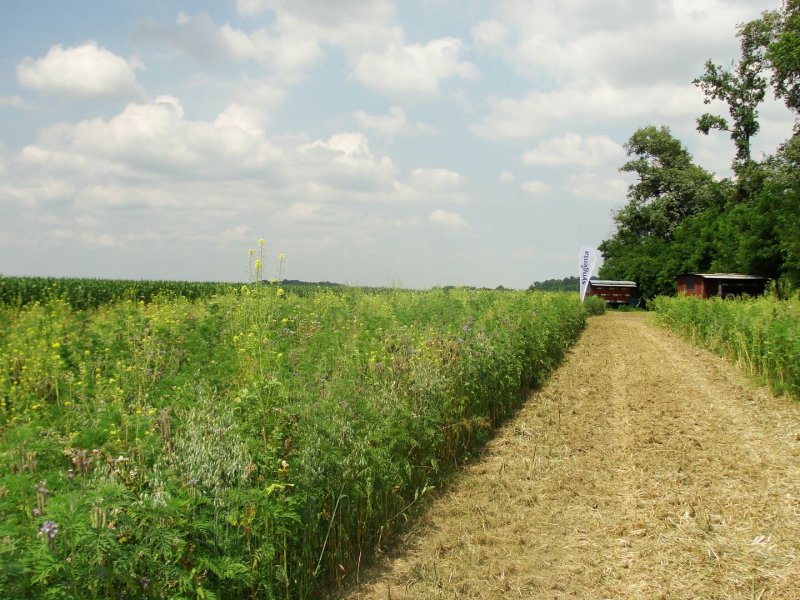
Strategic framework development
In 2023, we initiated collaboration with third-party experts to assess our alignment with the Taskforce on Nature-related Financial Disclosures (TNFD) recommendations and develop a comprehensive operationalization plan. This assessment serves as the foundation for our consolidated biodiversity strategy, enabling us to leverage Syngenta Group's strengths while identifying the most effective actions that contribute meaningfully to global biodiversity conservation efforts.
Through stakeholder engagement, we continue advancing scientific understanding and supporting policy improvements that benefit both agriculture and environmental conservation. This collaborative approach ensures our biodiversity initiatives are grounded in the best available science and aligned with global conservation goals.
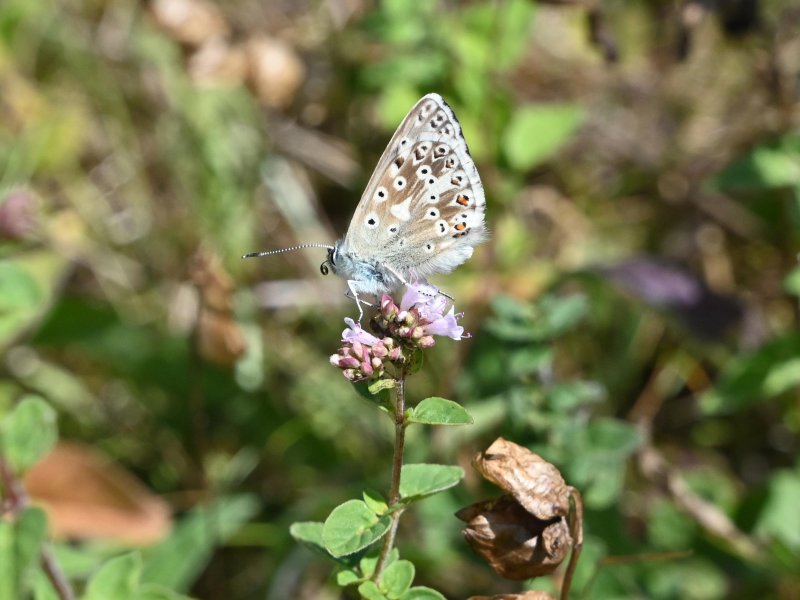
Restoring ecosystems:
Biodiversity conservation methods in agriculture
Biodiversity restoration and conservation methods focus on creating resilient agricultural ecosystems that deliver high productivity while restoring lost biodiversity. These practices can underpin the transformation of global food systems, recognizing that each unique context requires a different set of farming approaches to maximize productivity while restoring soil and biodiversity.
-
Regenerative crop systems and rotation
Many key practices have their roots with indigenous farmers who work with the land rather than against it. Intercropping systems, such as soybean and wheat combinations, keep plants in the ground year-round while continuous ground cover enhances soil and reduces the need for weed control products. Conservation agriculture demonstrates how diverse crop rotations, including spring crops alongside traditional winter varieties, can deliver significant economic benefits while providing substantial enhancement of key environmental and ecological measures.
-
Habitat creation through agricultural design
Keeping land covered with canopies of hedgerows, trees and cover crops is not only important for wildlife and pollinators but also helps farmers reduce the erosive impact that direct rainfall can have on soil. Farmers can protect biodiversity and natural habitats by sustainably increasing productivity on their existing farmland, which reduces pressure for agricultural expansion into natural areas. Since 75 percent of leading global food crops depend on pollinators such as bees and insects, habitat creation is essential for maintaining agricultural resilience.
-
Integrated Pest Management (IPM) excellence
IPM techniques use a variety of methods, including encouraging biodiversity in hedgerows and flower plantations to attract species that prey on or deter pests. Sustainable pest management approaches function through preventative modes that reduce the need for more aggressive interventions, protecting crops while preserving biodiversity by allowing non-target species to thrive and supporting more balanced ecosystems. Where chemical interventions are required, applications are kept to a minimum and made on a case-by-case basis.
-
Conservation agriculture and soil health
Low-till agriculture, also known as conservation-till or reduced-tillage, involves leaving at least 30 percent of crop residue on the soil surface, which greatly reduces soil erosion, keeps carbon locked in the ground, and retains more microorganisms that build healthier soil. Research shows that reduced non-inversion tillage, combined with cover crops, provides clear enhancement in key measures for soil health, carbon reduction and wider farm biodiversity.
-
Technology-enhanced monitoring
Modern biodiversity conservation leverages breakthrough monitoring technology, including low-cost, solar-powered sensors using machine-learning algorithms to identify and quantify insect species automatically, autonomously, reliably and at scale. Crop-monitoring drones fly over fields to detect areas under pressure from weeds, disease or insects, enabling farmers to precisely apply biological and chemical inputs using no more and no less than required. High resolution remote sensing powered by AI models and algorithms can map and classify habitats, as well as assess landscape connectivity supporting the planning of new habitat implementation.
-
Restoration at scale
Large-scale restoration initiatives work to restore degraded pasturelands and optimize production on existing farm property, demonstrating how millions of hectares of degraded soil can be recovered and turned into productive areas. This approach provides increased production while reducing conversion and biodiversity loss, representing a win-win for agriculture and conservation.
-
Supporting farmer implementation
Investment in research helps understand how beneficial practices can be applied efficiently in local settings, developing products that maximize soil health, yields, and carbon capture. Biostimulants play an important role by targeting plant physiology, stabilizing cells and strengthening roots while improving carbon sequestering capacity, nutrient uptake, and overall resilience to climate effects such as heat and drought.
These integrated methods demonstrate that regenerative agriculture can deliver high productivity and high-quality food while helping fight climate change and restore lost biodiversity, supporting the transformation toward more sustainable and resilient agricultural systems worldwide.
Can biodiversity be measured?
Measuring biodiversity presents one of agriculture's most complex scientific challenges, as it encompasses genetic diversity within species, species diversity within ecosystems, and ecosystem diversity across landscapes - each requiring different measurement approaches.
-
The measurement challenge
An additional challenge in biodiversity conservation is the lack of high-quality data, standards, or technologies to efficiently measure the status and trajectory of in-situ biodiversity and assess the impact of chosen conservation activities. Traditional monitoring has been fragmented, labor-intensive, and inconsistent, creating significant gaps in understanding how agricultural practices affect local ecosystems.
-
Emerging solutions
The agricultural sector is responding through innovative technologies. Advanced biodiversity sensors use machine-learning algorithms to automatically identify and quantify species at scale, while environmental DNA sampling can detect multiple species from soil or water samples without direct observation. Crop-monitoring drones equipped with sophisticated imaging can track biodiversity hotspots and habitat quality changes across farm landscapes. Habitat mapping and landscape connectivity analysis using high resolution remote sensing powered by AI deep learning can support habitat restoration planning.
-
Indirect measurement through conservation
While direct measurement remains challenging, biodiversity is greatest in natural habitats. Therefore, any efforts to limit agricultural activity to existing farmland - by increasing yields or restoring degraded farmland through measures that improve soil quality - inherently protects biodiversity by reducing pressure for agricultural expansion into pristine ecosystems.
This approach creates measurable outcomes through reduced deforestation rates, improved soil health indicators, and enhanced ecosystem services, providing valuable biodiversity insights even when direct species monitoring is limited. Success requires combining direct monitoring technologies with these indirect indicators to create comprehensive assessment systems that demonstrate real progress toward protecting the complex web of life supporting sustainable agriculture.
Biodiversity facts
These facts highlight key aspects of biodiversity that are relevant to Syngenta's agricultural focus: pollination services, soil health, and the role of farming in landscape-scale conservation.
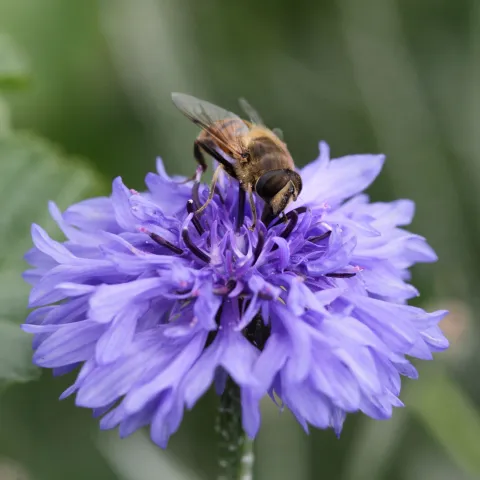
35% of global food production depends on pollinating species
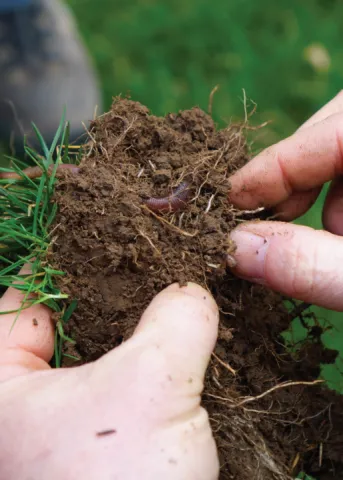
One teaspoon of healthy soil contains more microorganisms than people on Earth
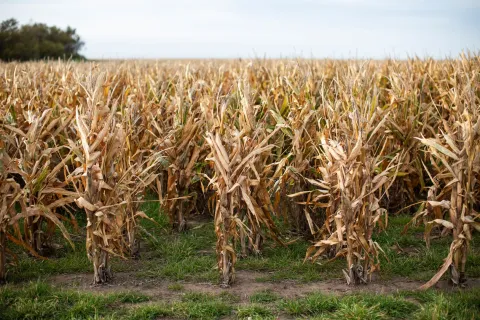
Agricultural landscapes cover 50% of the world's habitable land
How does biodiversity benefit farmers?
Based on Syngenta's comprehensive Multifunctional Field Margins (MFFM) study, biodiversity provides direct economic and operational benefits to farmers.
-
Increased yield and quality
MFFM research demonstrates that biodiversity enhancement increases pollinator populations and beneficial insects, directly improving crop yield and quality. Farmers implementing biodiversity practices report higher yields compared to conventional farms. Natural pest control from beneficial insects can provide five to 10 times more effective pest management than chemical approaches alone, reducing input costs while maintaining productivity.
-
Improved soil health and erosion control
Biodiversity conservation through flower margins and cover crops significantly improves soil structure, fertility, and biological activity. These practices increase earthworm populations essential for nutrient cycling, enhance water retention, and reduce soil erosion. This prevents costly topsoil and nutrient loss while reducing the need for soil amendments over time.
-
Enhanced water management
Vegetated margins help control flooding by increasing water retention capacity and filtering pollutants from runoff. This reduces operational risks from water damage and helps farmers comply with environmental regulations while protecting downstream agricultural areas.
-
Economic returns
The MFFM study quantifies substantial monetary benefits from biodiversity measures. Field margins with diverse plantings generate about $1,600 per hectare annually, while tree-based margins provide $1,200 per hectare annually. Enhanced connectivity systems can deliver up to $4,100 per hectare annually. These returns come from ecosystem services including pollination, water management, carbon sequestration, and erosion prevention.
-
Operational benefits
Biodiversity-friendly practices can deliver up to 18 percent improvement in net profits through reduced input costs and stable yields. Farmers could gain access to premium markets, sustainability certifications, and government incentive programs. Additionally, biodiverse systems show greater resilience to climate variability, providing more predictable yields and reduced operational risks.
